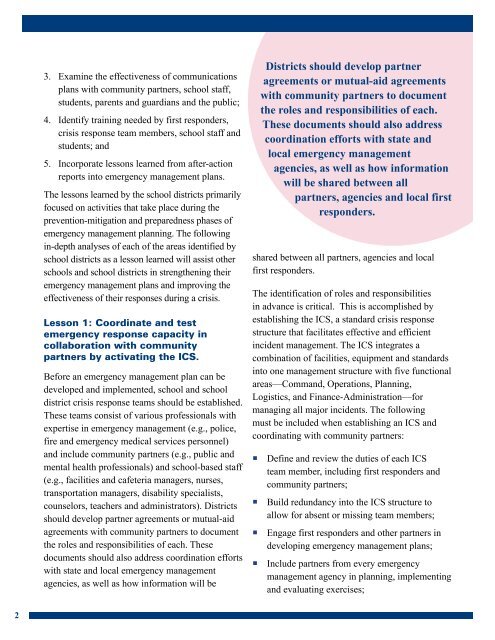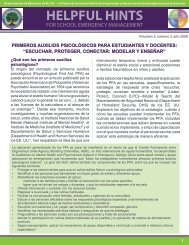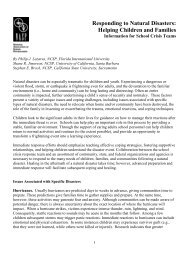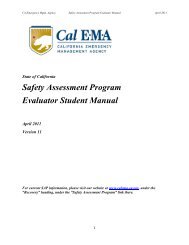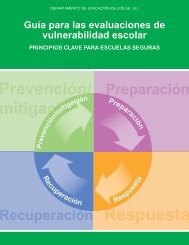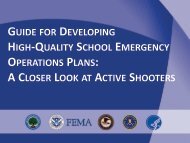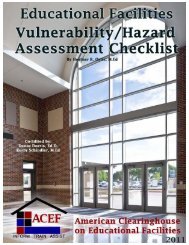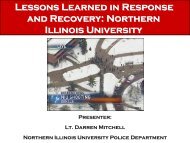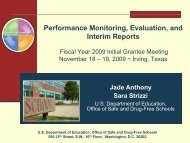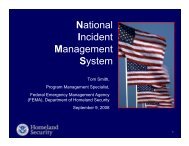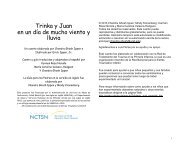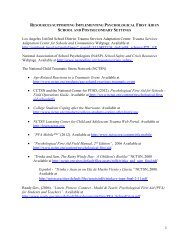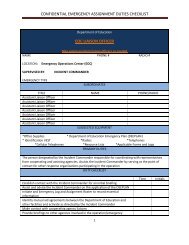cAptuRing Lessons LeARned And ...AfteR-Action RepoRts
cAptuRing Lessons LeARned And ...AfteR-Action RepoRts
cAptuRing Lessons LeARned And ...AfteR-Action RepoRts
- No tags were found...
You also want an ePaper? Increase the reach of your titles
YUMPU automatically turns print PDFs into web optimized ePapers that Google loves.
3.4.5.Examine the effectiveness of communicationsplans with community partners, school staff,students, parents and guardians and the public;Identify training needed by first responders,crisis response team members, school staff andstudents; andIncorporate lessons learned from after-actionreports into emergency management plans.The lessons learned by the school districts primarilyfocused on activities that take place during theprevention-mitigation and preparedness phases ofemergency management planning. The followingin-depth analyses of each of the areas identified byschool districts as a lesson learned will assist otherschools and school districts in strengthening theiremergency management plans and improving theeffectiveness of their responses during a crisis.Lesson 1: Coordinate and testemergency response capacity incollaboration with communitypartners by activating the ICS.Before an emergency management plan can bedeveloped and implemented, school and schooldistrict crisis response teams should be established.These teams consist of various professionals withexpertise in emergency management (e.g., police,fire and emergency medical services personnel)and include community partners (e.g., public andmental health professionals) and school-based staff(e.g., facilities and cafeteria managers, nurses,transportation managers, disability specialists,counselors, teachers and administrators). Districtsshould develop partner agreements or mutual-aidagreements with community partners to documentthe roles and responsibilities of each. Thesedocuments should also address coordination effortswith state and local emergency managementagencies, as well as how information will beDistricts should develop partneragreements or mutual-aid agreementswith community partners to documentthe roles and responsibilities of each.These documents should also addresscoordination efforts with state andlocal emergency managementagencies, as well as how informationwill be shared between allpartners, agencies and local firstresponders.shared between all partners, agencies and localfirst responders.The identification of roles and responsibilitiesin advance is critical. This is accomplished byestablishing the ICS, a standard crisis responsestructure that facilitates effective and efficientincident management. The ICS integrates acombination of facilities, equipment and standardsinto one management structure with five functionalareas—Command, Operations, Planning,Logistics, and Finance-Administration—formanaging all major incidents. The followingmust be included when establishing an ICS andcoordinating with community partners:• Define and review the duties of each ICSteam member, including first responders andcommunity partners;• Build redundancy into the ICS structure toallow for absent or missing team members;• Engage first responders and other partners indeveloping emergency management plans;• Include partners from every emergencymanagement agency in planning, implementingand evaluating exercises;


